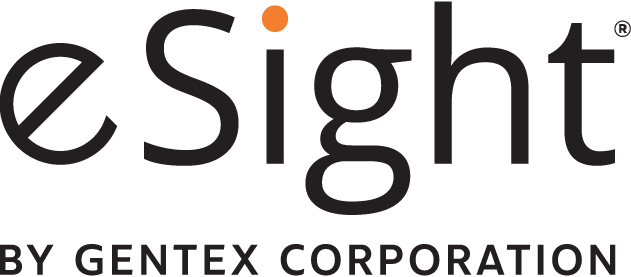Richard Jablonski is a legally blind veteran, formerly of the U.S. Air Force, but still works hard as a sales manager of construction materials. He has retinitis pigmentosa (RP), a genetic disorder that caused him to lose peripheral vision in his right eye and center vision in his left eye. He has been living with vision loss for 15 years.
Richard’s vision loss complicated several aspects of his job, including visiting job sites and working with clients outside of his home office. Vision loss also affected a number of personal activities such as reading, watching TV and using electronics.
“Prior to receiving my care at the Veteran Affairs (VA) clinic in 2011, I was very depressed and had no motivation,” shares Richard. “With the support of the Visually Impaired Services Team and the Blind Rehabilitation Center at the VA, I have a very positive, productive attitude and have become involved with the Blinded Veterans Association and other organizations who focus on the needs of the blind/low vision population.”

Richard is not alone. Approximately 130,000 U.S. veterans are legally blind, according to the VA’s Office of Blind Rehabilitation Services, and more than 1 million veterans live with low vision that prevents them from working, taking care of their families, and doing the things they love. Being unable to work or enjoy hobbies can have a profoundly negative effect on people who are legally blind. In fact, the results of one study showed that 43 percent of people with visual impairments experience symptoms of depression.
“eSight offers the latest technology available to let individuals with loss of vision see again. I would encourage anyone with serious loss of vision to investigate the possibilities of seeing again with eSight,” said Richard. “And I would encourage any and all federal agencies, health insurance companies, nonprofits and private foundations to provide financial aid so anyone who can benefit from eSight would have it available at no cost or a reduced cost.”
Fortunately, the VA is dedicated to providing care for those “who shall have borne the battle” now more than ever. The VA has recently approved eSight for registration on their Federal Supply Schedule (FSS), which makes eSight more readily available to veterans with visual impairments. Almost immediately after VA approval, the Blind Rehabilitation Centers (BRC), Edward Hines, Jr. VA Hospital, and many other low vision clinics began providing veterans like Richard access to eSight.
eSight helps low-vision veterans and others with common vision-robbing conditions, such as macular degeneration, diabetic retinopathy, ocular albinism, optic atrophy, glaucoma, and more. Adding eSight to the VA’s FSS has helped changed the lives of veterans like Richard.
To learn more about support options and technology available for low vision veterans.
